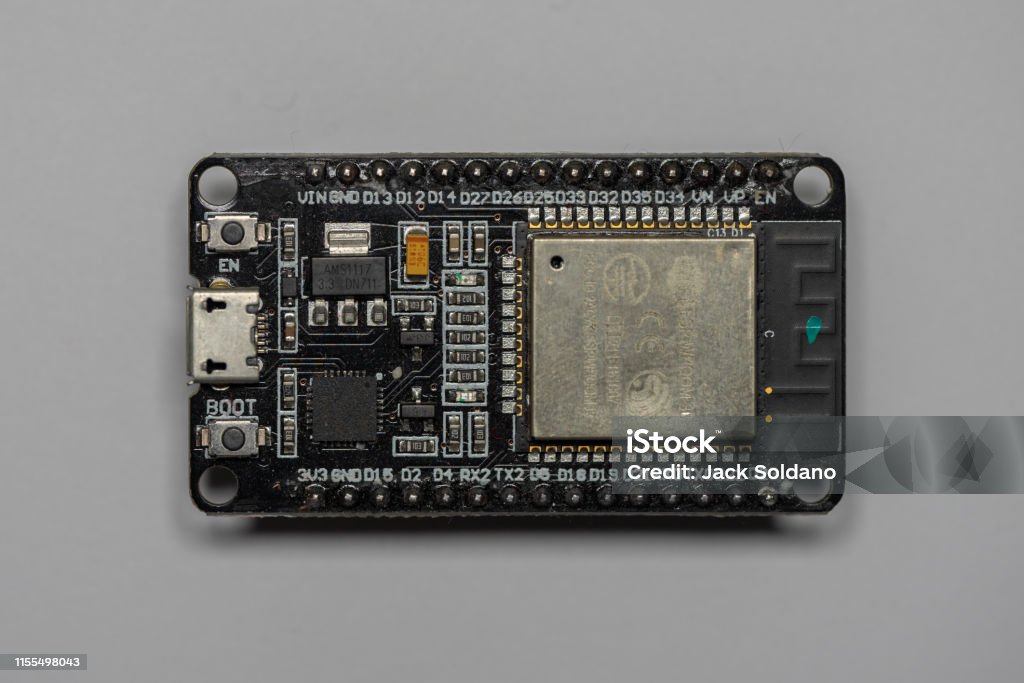Explore this beginner’s guide on how to getting started with ESP32, a versatile IoT microcontroller that supports both Wi-Fi and Bluetooth, ideal for IoT projects.
Getting Started with ESP32: A Comprehensive Guide
The ESP32 is a powerful microcontroller developed by Espressif Systems, designed for IoT (Internet of Things) applications. With built-in Wi-Fi and Bluetooth capabilities, it is ideal for creating smart devices and connected projects. This guide will walk you through the basics of ESP32, how to get started with it, and some common use cases for this versatile microcontroller.

What is ESP32?
The ESP32 is a low-cost, low-power system on a chip (SoC) with integrated Wi-Fi and dual-mode Bluetooth. It is highly flexible and can be used in a wide variety of IoT applications, from smart homes to wearable devices. The ESP32 is equipped with powerful processing cores, ample I/O pins, and several built-in peripherals, making it an ideal choice for both beginners and advanced users.
Why Use ESP32 for IoT Projects?
The ESP32 stands out for several reasons, making it the go-to choice for IoT enthusiasts:
- Wi-Fi and Bluetooth Connectivity: The ESP32 supports both Wi-Fi and Bluetooth, allowing your IoT devices to connect and communicate wirelessly.
- Power Efficiency: With its low-power design, the ESP32 is perfect for battery-powered applications.
- Extensive Libraries and Support: It has a vast community and many open-source libraries, making it easier for developers to create their projects.
Setting Up ESP32 for the First Time
To get started with ESP32, you will need the following:
- ESP32 Development Board: Various models are available, but the ESP32 DevKit is the most popular for beginners.
- USB Cable: To connect the ESP32 board to your computer.
- Arduino IDE or ESP-IDF: You can program the ESP32 using the Arduino IDE or the official ESP-IDF (Espressif IoT Development Framework).
Installing the Arduino IDE for ESP32
- Download and Install Arduino IDE: Visit the official Arduino website and download the latest version of Arduino IDE.
- Add ESP32 to Arduino IDE: Open Arduino IDE, go to File > Preferences, and paste the following URL into the “Additional Boards Manager URLs” field:
https://dl.espressif.com/dl/package_esp32_index.json. - Install ESP32 Board: Go to Tools > Board > Boards Manager and search for “ESP32.” Install the ESP32 package.
- Connect the ESP32: Select your ESP32 board under Tools > Board and connect it via USB.
First Project: Blinking an LED
Once you have the ESP32 set up, let’s write a simple program to blink an LED. This is a classic first project for getting familiar with the hardware and the development environment.
void setup() {
pinMode(2, OUTPUT); // Set GPIO 2 as an output pin
}
void loop() {
digitalWrite(2, HIGH); // Turn the LED on
delay(1000); // Wait for a second
digitalWrite(2, LOW); // Turn the LED off
delay(1000); // Wait for a second
}
Upload this code to your ESP32, and if everything is correctly set up, you should see the onboard LED blink.
Popular Applications of ESP32
The ESP32’s versatility opens up a range of exciting IoT applications:
- Home Automation: Control smart devices like lights, thermostats, and security systems.
- Wearable Devices: Use ESP32 to create fitness trackers or smartwatches.
- Robotics: Build robots that can be controlled wirelessly using the ESP32’s Bluetooth functionality.
- Sensor Networks: Monitor environmental conditions with connected sensors powered by the ESP32.
Conclusion
The ESP32 is a versatile and powerful microcontroller that simplifies the creation of IoT projects. Whether you’re a beginner looking to create your first IoT device or an experienced developer, the ESP32 offers endless possibilities for innovation.
